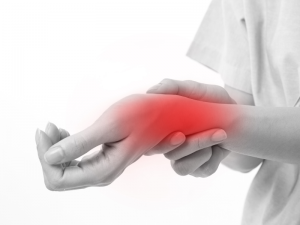On an almost daily basis, I get asked to explain what I do, not my occupation but what do osteopaths actually do? I suspect if I took a public survey the reply would be one of the following: “They crack peoples backs, don’t they? ” Or with a shrug of shoulders, “I’ve never heard of one of those”. Many people think osteopaths are just spinal manipulators or a branch of another manual treatment, but we have in the main working quietly in the UK for over 120 years.
Here’s a little history, the term ‘osteopathy’ was first used by the American medical doctor Andrew Taylor Still. The origin of the word is from the Greek for bone (osteon) and suffering (pathos). Today in USA osteopaths are MDs, medical doctors who aligned themselves with the orthodox medical profession and can also prescribe medicines and offer surgery alongside their osteopathic practice.
In the UK we are a small profession of under 6000 registered practitioners and not doctors. Law protects the title osteopath, any person calling themselves an osteopath must undertake approved training and showed their safety and efficacy, and be registered with the General Osteopathic Council (GOsC) Osteopaths are required to renew their registration each year. As part of this process, the GOsC checks they have the correct indemnity insurance, are meeting professional development requirements, and remain in good health.
Osteopathy received a status upgrade in April 2017, NHS England recognised osteopathy as an allied health profession. Although we have been working in the NHS including in hospitals and as part of the primary care team in some GP surgeries for many years, this was a significant and important achievement in recognising our contribution to the health care of the nation.
Osteopathy is an approach to healthcare which recognises the vital link between the structures of the body and the way it works. With this focus on how the skeleton, joints, muscles, nerves, circulation, connective tissue and internal organs function as a holistic unit, osteopaths use a range of approaches including manual therapy, joint mobilisation, manipulation, soft tissue massage non-direct techniques, movement therapy and exercise prescription, lifestyle advice and patient education to enhance wellbeing.
Many other manual therapy professions use the concepts and techniques that originated within osteopathy although there is much more to osteopathy than just the methods used or clicking someones back.
Here are 5 reasons that make osteopaths and their treatment distinctive;
- Osteopaths undertake extensive training over 4-5 years, which involves at least 1,000 hours of clinical training. Many seek further study to offer specialised care, with increasing numbers qualified to PhD level. As primary health care practitioners, osteopath are skilled in assessing and diagnosing patients without a GP referral. It often amazes people including medical doctors how in-depth our training and practice is “Wow! That makes sense, but no one has made that connection before” is a typical remark received during a consultation.
- Our academic and clinical training teaches us that where the person has pain is not necessarily where the problem originated; We check many anatomical structures to understand how the symptoms arose before discussing with the patient their treatment options. One of the most significant differences that make osteopathic treatment stand out is the philosophy and a way of interpreting what information we gather from the patient history, examination. We work as body detectives, piecing the clues together and figuring out how to best address problems with hands-on treatment, corrective exercise and lifestyle advice.
- Osteopaths develop a more holistic understanding of the human body. Yes, we may be comprehensively trained, but that’s not enough to have a holistic approach to the human body. Being holistic means understanding how one part of the body, our mind, habits, beliefs and behaviours can affect the rest of the body. For example, how vision problems can cause neck or shoulder pain, or an old long forgotten ankle sprain leads to hip pain years later. While we might forget these minor incidents of life, the body stores memories, and it’s the osteopath’s role to connect these to the patients presenting symptoms. When patients experience how all the factors in their health timeline connect, many will recall or sing that little ditty from their childhood, “your neck bone connects to your head bone.”
- Osteopathic treatment interacts with person anatomy to help remove the obstacles to allow a person’s innate ability to heal itself if that sounds a tad new age? If we take a fractured ankle as an example, the plaster cast or air boot doesn’t fix the bone, it provides support as the body gets on with its inherent natural ability to repair and heal.
- As autonomous health professionals, a whole-person approach to health has always been at the core of osteopathic care, which is fundamental to transforming health and wellbeing. You only have to look to the plethora of new books, TV programmes, podcasts from conventional doctors extolling the benefits of a person-centred or a functional medicine approach to healthcare to see that osteopathy was decades ahead of the game.
Summary
Osteopathic treatment is not about techniques but approaches to wellness, not just diseases. For example, some of the healthiest patients I treat are those with complex multifactorial conditions, yet they are often thriving despite their health or illness. While others will seemingly minor flare-up struggle to get through each day because they history of unconsidered and untreated problems.
Coming next time, 5 more reasons why osteopathic treatment is different.
SaveSave
SaveSave







